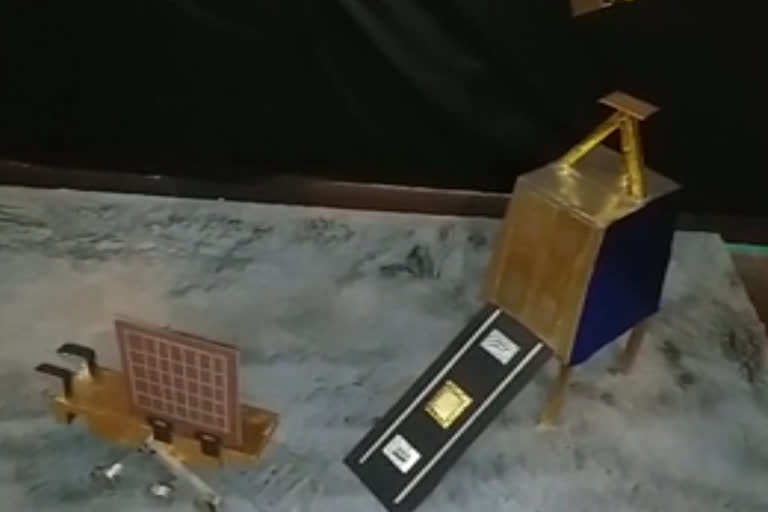New Delhi:With less than an hour to go for the launch of Chandrayaan-2, India’s second moon mission- by the Indian Space Research Organisation (ISRO) from Satish Dhawan Space Centre in Sriharikota in Andhra Pradesh's Nellore district, ETV Bharat caught up with the staff members of Nehru Planetarium in New Delhi, who expressed their excitement for the launch.
Speaking to ETV Bharat, a staff member explained that the motive behind the mission is to explore the possibilities of life on the Moon, "Chandrayaan-2 aims at exploring possibilities of life on the Moon."
Chandrayaan-2 will explore possibilities of life on Moon, says Nehru planetarium staff The launch of Chandrayaan-2 was dramatically called off less than an hour before the lift-off time on July 15 following a "technical snag".
According to ISRO sources, the 978 crore mission was called off - with 56 minutes left for the countdown to end on July 15 - as the rocket was not functioning according to laid down parameters. The lunar landing mission was rescheduled for July 22 after scientists corrected the glitch in the rocket.
Another staff member at the planetarium explained the differences between the previous Moon mission and the present one.
"It is different from the first mission because it has a lander as well as a rover and an orbiter. After its launch from planet earth, the lander will land on the moon, the rover will then walk on the moon and collect samples from it, and the orbiter would send messages back to earth, apart from mapping the moon."
Chandrayaan-2 will be launched onboard ISRO’s most powerful launcher, the 640-tonne rocket Geosynchronous Satellite Launch Vehicle-Mark III (GSLV-Mk III). Measuring 44 metres in height, the launcher of Chandrayaan-2 has been nicknamed ‘Bahubali’.
Also read:People in Kanpur offer prayers for success of Chandrayaan-2
About 16 minutes after Chandrayaan-2’s lift-off, the lander, GSLV MkIII, will inject the mission into 170 x 40400 kms Earth orbit.
From then onwards, the mission will witness a series of manoeuvres by scientists to carry out different phases of the mission.
